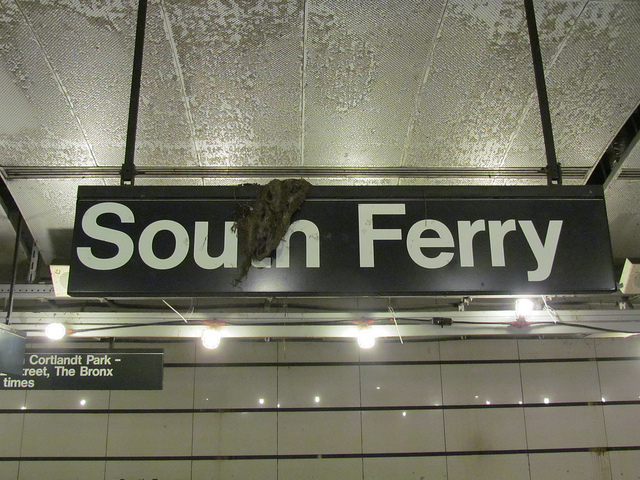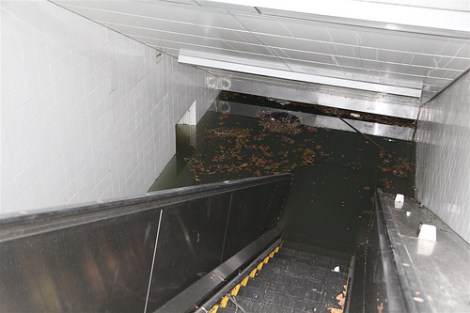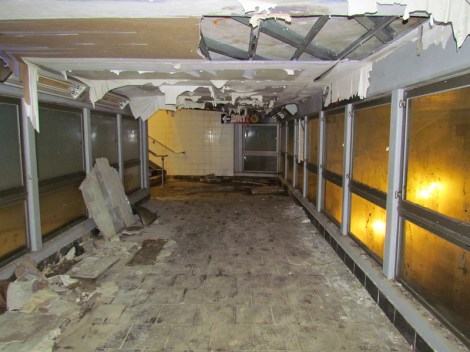In 2009, New York City’s Metropolitan Transit Authority proudly announced the reopening of the South Ferry subway station following an extensive, $530 million remodel. The station is right at Manhattan Island’s tip, under the terminal from which the Staten Island Ferry docks and departs. And when Sandy hit, South Ferry became an aquarium.
This is what the station looked like immediately after the storm.
And this is what it looked like yesterday.
That’s from a gallery of photos taken by Benjamin Kabak, who runs Second Avenue Sagas, a blog focused on New York transit. He took a tour of South Ferry station yesterday, and marveled about how little progress has been made. Here’s how he described the tour:
Led by Wynton Habersham, a 30-year vet of the MTA, I saw a station in ruins. Tiles have fallen from the ceiling and walls, debris is everywhere and the electronics — the hidden aspect of the station — are completely wrecked. “It’s like throwing a computer into seawater,” Habersham said of the rampant destruction. The station filled up with 80 feet of water, and crews eventually pumped out 14.5 million gallons of damaging brackish saltwater.
While the station looks bad, the cosmetic impact is nothing compared to the destruction to key signal systems and train control infrastructure. All of the equipment inside the signal relay room will have to be replaced, and in fact, the entire signal system south of Rector St. will likely have to be completely overhauled as well. Vital infrastructure — the very systems that keep trains from colliding with each other and on the right tracks — is useless, corroded from saltwater exposure. …
[I]f all goes according to plan, perhaps we’ll see South Ferry reactivated in 2014. But the MTA has to decide how to repair the station and what hardening takes place.
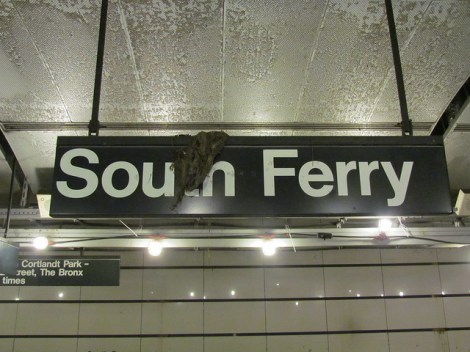
benyankeeStorm debris left on top of a sign in the station.
Initial estimates of the cost to repair the station run about $600 million. But that is only listed as a “restore” project by the MTA; it’s not clear the extent to which it includes preventative measures for a station more at risk from future flooding than most. As Curbed NY notes:
The $600 million cost to rebuild it will be even more than the $545 million renovation it underwent in 2009. It will cost about $350 million to repair physical damage to the station, $200 million to replace the 600 electromechanical relays, circuit breakers, and switch boards that were corroded by the salty water, and $30 million to replace third rails.
The MTA must also decide if they should move the electronic equipment to higher elevation, which would require changing the layout of the station. This decision has to be made before any signal repair work begins, and the challenges to replacing all of this equipment highlight post-storm issues faced by the whole system.
30,000 people a day passed through the station in 2011, putting it in the top 10 percent of stations. In 2013, that figure will be zero. After that? Who knows.
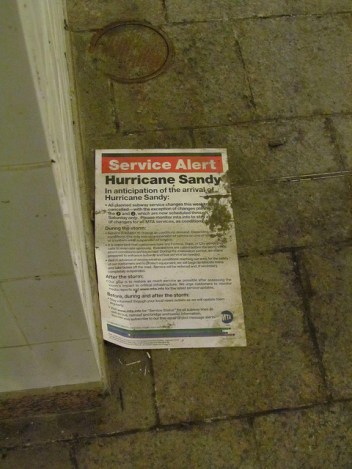
benyankeeA service alert issued before the storm lies on the empty platform.

